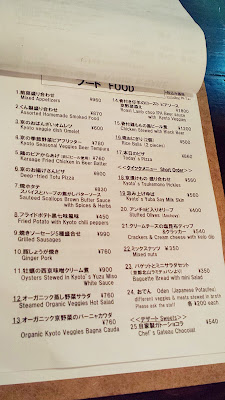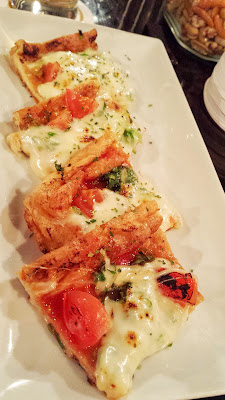When I travel to other countries, one of my fun activities I like to do is wander in neighborhoods, just observing the atmosphere and the differences in the buildings, the streets, in the people passing through the streets with me, peering into restaurants and stores (browsing is free, it’s the shopping that gets you!). The Gion area in Kyoto is an area famous for its historic wooden buildings and neighborhoods from the Edo period (1603–1867), so the scenic streets of Gion are a great place to walk around
Gion is also a famous entertainment districts that is full of teahouses and restaurants and bars, traditional performing arts, and is one of a few places you may see a geisha. In the morning, these old fashioned streets of Gion are quiet and are the best time to take photos that capture the wood. Then as it gets later in the day and the dining destinations get open for the evening, the lanterns get lit, and it gets very busy with people hoping to glimpse a geisha on her way to an evening appointment.
Hanamikoji Dori
What we are looking for is Hanamikoji Dori, the second the street on the right side if you are facing east walking away from the river on Shijo Dori. It’s a street with lovely wooden machiya merchant houses:
Don’t be fooled at how traditional and quiet this is because as soon as it’s evening… this was much later after the dinner hour so not as bad as when the streets were literally filled with cars and people trying to make way for each other (there aren’t any marked sidewalks) on their way to dinner. Notice all the lit red lanterns.
Shirakawa Area
Go back across Shijo Dori and head 3 blocks north, turning left on Shinbashi Dori. Here in the Shirakawa Area – follow the street just along the small river here – there’s a interesting juxtaposition of the old fashioned wooden machiya houses here and the modern urban street poles and wires.
The canal is lined by willow trees, high class restaurants and ochaya, many of which have rooms overlooking the canal. It’s interesting here because we can look into the room like it’s an exhibit as people enjoy dinners in private rooms with complete and no privacy.
Now here’s a look when we walked by in the morning. Lonely Planet opines is “one of Kyoto’s most beautiful streets and, arguably, the most beautiful street in all of Asia, especially in the evening and during cherry-blossom season.” It’s December so we’ll just have to imagine the cherry blossoms
Ishibei-koji Lane
My vote for most scenic street that is like a step back in time is the short walk along Ishibei-koji Lane, located just by Kodaji Temple that I had covered previously. At only 200 meters it’s short and more like an alley than a street, but Lonely Planet also dubs this too “perhaps the most beautiful street in Kyoto” and Inside Kyoto called Kyoto’s most atmospheric pedestrian-only walkway. There is no sign for this, so prepare to orient yourself using GPS.
These wooden machiya townhouses are rapidly disappearing from Kyoto, having had the good fortune to survive World War II (new machiya are prohibited from being built now, leaving only restoration) but now the difficult and expensive maintainace means many are being demolished in favor of modern buildings. I highly recommend when in Kyoto taking a walk in at least one of the above streets to get a feel of being a pedestrian in Kyoto a hundred or do years ago. For a more in depth experience, Iori, a company founded by a traditional culture advocate, rents multiple machiya for guests to stay.
Jam Hostel’s Sake Bar
Not far from the Shirakawa area and Gion – Shijo station is this recommended bar from the owner of Beer Komachi – Jam Hostel’s Sake Bar. This is why I love asking local industry people their recommendations: its location in a hostel meant I probably would have overlooked it. But she sent us to this location reassuring it was well worth it for us even if it also serving as a hostel was unusual. Boy was she right. The menu was probably a dozen pages long full of sake options to order individually, as well as offering flights and it could be served cold or hot. There were flights that were dedicated to being local to Kyoto as well as a few other prefectures including the owner’s home region of Niigata.
.
This was my very favorite sake of the night, and pretty much ever – Kaisyun / Shimane Kimoto and wooden barrel aged sake. The owner tried to warn us that it was very strong, but we convinced him we were up to the task. I was pretty surprised when it poured so dark and thick, almost like a balsamic vinegar – but it was so full of thick flavors that swirled and changed on the tongue that I was in love.
I have no idea where or how to get this type of sake here in Portland. But, if you are interested in sampling sake, there is in June the annual Sake Fest that you might want to consider where you can taste sake for hours and learn!
These stops in today’s post could be done together in a circle. We actually stayed at an Air BnB close by which I picked specifically to near Gion because I wanted to be in easy walking distance to great food and drink, so it was easy to visit all these locations by night and day. It’s my usual modus operandi when picking a place to stay: map out the things I want to eat and drink and stay nearby the food!
If you are going to do a walking tour and not staying in the area, you will probably arrive via Keihan Main line at Gion – Shijo Station and you should proceed first with Hanamikoji Dori, then Ishibei Koji, then circle back to the Shirakawa Area and finish at the Sake Bar – and you could combine this once you get towards Ishibei Koji with some of the Kyoto Temples and Shrines I wrote about earlier as they are nearby.
Alternatively if you are on the east side towards Yasaka Shine, go to Ishibei Koji first, then walk west towards the river to Hanamikoji Dori and the Shirakawa area then the Sake Bar to finish at the Gion – Shijo station is just to the east side of the river.
Do you have a favorite walking neighborhood from your travels, where is it? How crazy is that sign about not harassing the geishas at the beginning of this post?
This concludes my Travel Tuesday posts about Kyoto – we only stayed in the city for 3 days. So next we’ll shift from historical to modern as we go to Osaka next week!
Here’s a summary of my Japan Travel post series:
- Guide to Planning a Trip: Research
- Guide to Planning a Trip: Mapping
- Hagoita Ichi Winter Festival at Sensoji Temple, Japan
- Japanese Treats at Temples and Shrines
- Winter Illuminations in Tokyo (Winter Season – November – February!)
- Snow Monkeys in Hot Springs
- Onsen by Mount Fuji covers Onsen 101 and how we loved our stay at Lake Kawaguchiko
- Dining at a Ryokan a look at what a traditional dinner and breakfast might be during a ryokan stay
- Visiting Cup Noodles Museum in Yokohama (just outside Tokyo)
- Visiting Shin Yokohama Ramen Museum
- Kyoto Temples and Shrines (walking tour starting in Higashimaya with stops especially at Kiyomizudera Temple, Kodaji Temple, Heian Shrine)
- Kyoto Temples in Arashiyama
- Kyoto Tofu
- Kyoto Famous Sights of the Kinkakuji (The Golden Pavilion) and Fushimi Inari (Red Torii Gates)
- Famous Signs of Osaka and eating Osaka Food specialities like okonomiyaki, takoyaki and kushikatsu
- Visiting Himeji Castle, the famous white castle in Japan
- Fun at Japanese Cafes and More including Maid Cafe, Cat Cafe; theme parks of J World and Namja Town, a geeky stop at Kanda Myojin, and Ghibli Museum
- Japan Eating Checklist is my top 25 list of things to try to include as an eating experience when visiting Japan
- New Year’s in Japan: Oji Fox Parade, and some photos of a Meiji Shrine visit on New Year’s Day














